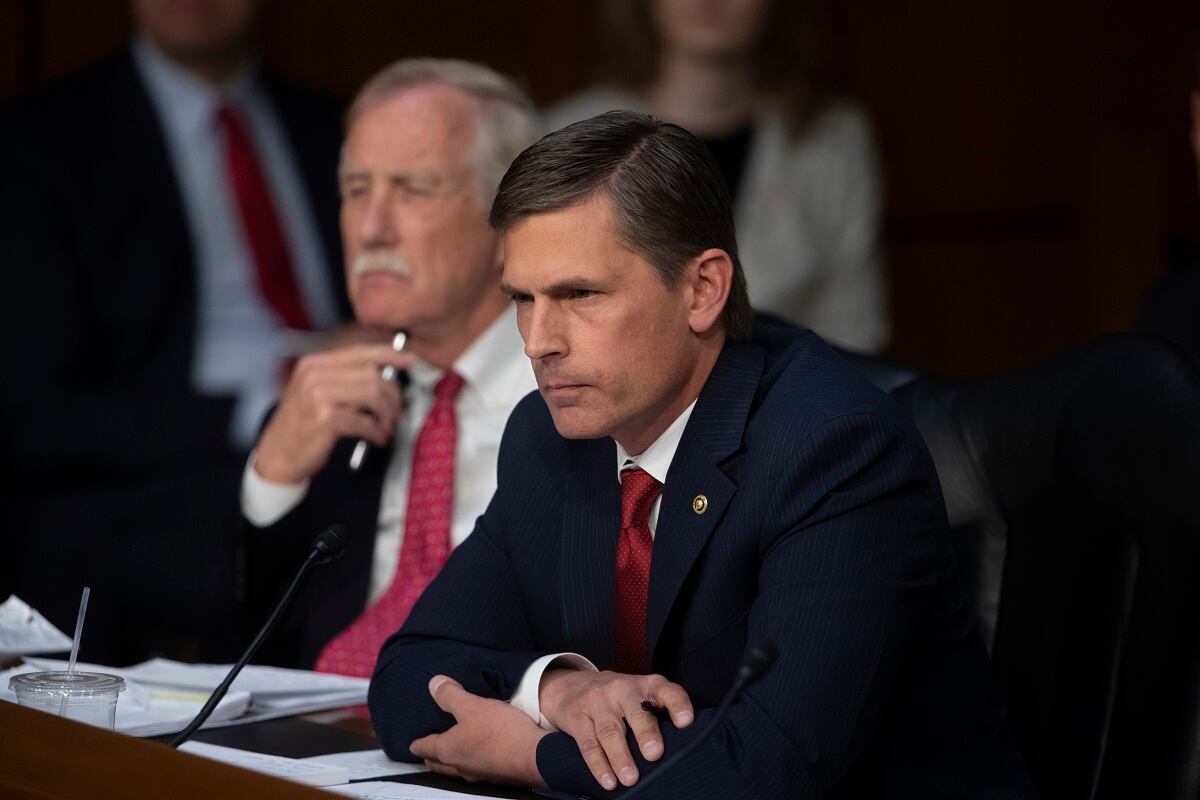In the weeks leading up to the release of the Department of Defense’s multibillion-dollar commercial cloud solicitation, Pentagon leaders dug in for a fight. Officials vowed to move forward with a single-source contract award for the Joint Enterprise Defense Infrastructure, insisting it’s the best approach for a seamless cloud capability that extends to the battlefield.
“We’ve not heard anybody say that a multiple-cloud solution is a better solution for providing that capability to the war fighter, and that’s why we’re saying that based on where technology is today, based on where the offerings of the commercial cloud providers are and based on current acquisition law, the department’s optimal solution is a single-award contract,” Robert Daigle, director of cost analysis and program evaluation at the Pentagon, said.
But leaders from across the IT sector disagree, with industry groups mounting an offensive aimed at swaying DoD brass — or at least forcing their hand to reconsider the approach.
Many across the IT community agree it’s likely there could be a drawn-out protest process following the contract award.
“There used to be a saying that it only costs a first-class stamp to file a protest — and it doesn’t even cost that anymore when you can file them online,” Dave Mihelcic, former CTO at the Defense Information Systems Agency and now federal chief technology and strategy officer at Juniper Networks, said.
“When and if the contract is awarded, there’s a high probability there’s going to be a protest against it, and they’ll have to sort out whether that protest has merit.”

Mihelcic noted that a protracted protest battle could have lasting impact on the actual cloud capability itself, billed as the future go-to vehicle for military data needs for as long as the next decade.
If there is a significant protest, “do you try to amend the [request for proposals] or do you just take a step back and look at the actual strategy?” Mihelcic said.
“One of the fundamental things industry has said throughout this process is it doesn’t make sense to have a single cloud for a department as large as DoD. That’s not even an RFP issue — that’s a strategy issue. It’s more fundamental than the RFP itself; it’s going back and rethinking the acquisition strategy and saying, ‘perhaps a single award doesn’t make sense.’”
That’s the point industry has tried to impress upon Pentagon officials, including through a draft RFP feedback process in which private sector comments were met with a perfunctory DoD response of “Your comment has been noted.”
“Deployment of a single cloud conflicts with established best practices and industry trends in the commercial marketplace, as well as current law and regulation, which calls for the award of multiple task or delivery order contracts to the maximum extent practicable,” members of the IT Alliance for Public Sector wrote to congressional leadership. “Further, the speed of adoption of innovative commercial solutions, like cloud, is facilitated by the use of these best practices.”
ITAPS and stakeholders from across the IT community have asserted that the Pentagon’s insistence on a single-award contract is at best misguided and, worse, could run afoul of acquisition laws.
“DoD’s cloud acquisition strategy, as outlined in the draft RFP released in early March and affirmed in the second draft released this month, remains designed to facilitate the deployment of a single cloud under this program,” the ITAPS letter stated.
“For this reason and consistent with the Secretary’s sentiments, we encourage the Department to follow the law, regulations and commercial best practices in this acquisition strategy.”
DC-wide battle looms large
On Capitol Hill, lawmakers also have called on DoD officials to prove that they are working within legal requirements and best practices. In the House of Representatives’ final version of the fiscal 2019 National Defense Authorization Act, lawmakers withheld 50 percent of JEDI funding pending the submission of a justification report detailing the acquisition strategy.
“I think it deserves some oversight,” Sen. Martin Heinrich, D-N.M., said in an April 26 Senate Armed Services Committee hearing.
“We included language in the [omnibus appropriations bill] that requires you to submit full justification for executing a single award, not sole-source but single-award contract instead of a multi-cloud approach.”

Pentagon spokesmen said May 7 that a justification report was submitted to Congress that day, but offered no further details.
DoD officials — speaking at a range of press briefings, industry events, Capitol Hill hearings and additional appearances — have maintained their adherence to federal contracting law and best practices, telling reporters, lawmakers and industry groups alike that the competition remains wide open.
“Everything that we’ve done, it’s full and open competition. As you can imagine, we know this is sensitive so we’ve been hyper sensitive as we’ve looked at it from every angle, including the legal execution from the contract and how we structured it,” DoD Chief Management Officer Jay Gibson told sister publication Defense News in an interview. “We feel good that what we’re doing is the right way to do it.”
Ellen Lord, under secretary of defense for acquisition and sustainment, echoed Gibson’s sentiments in a media roundtable April 13.
“The department has multiple cloud contracts and we will continue to have multiple cloud contracts. We are working with a variety of companies and we want to leverage the entire industrial base,” Lord said.
“There is ample opportunity for everyone to play throughout the department, so I see no focus toward one company whatsoever. We are following typical procedures: We put out [requests for information], [and] we got over 50 responses so that. So we are adhering to good contracting practices.”
Defense officials also have downplayed the significance of JEDI when it comes to the bigger DoD cloud picture.
“Folks are trying to present this as the Department of Defense moving to a single award for all cloud computing,” Daigle said.
“This contract, even if we max out the annual spend, represents about 16 percent of our hosting costs currently, which represent about 12 or 13 percent of our overall business system IT costs. So really the amount that we’re talking about here is not the end of history; it’s one cloud contract.”
Gibson, speaking to reporters at the Pentagon on April 23, emphasized that JEDI is just the first step in a long journey toward achieving the vision of universally available access to data on-demand.
“If you look at where we are, there is not some silver bullet where you will design something, flip a switch and then it all just happens. So we have to start this process,” he said.
“We don’t know the ultimate end state. We do know a single environment is much better than the federated environment we have. It’s about getting started, getting going and we are very comfortable that this will put us in a much better place.”
That global access to mission-critical data at the tactical edge is a chief reason for looking toward a single provider, Daigle said. Security is another, and DoD officials don’t want the burden of managing the seams between multiple clouds and multiple data “ponds” that would come with multiple providers. Instead, they’re looking to get the military’s widely scattered and heterogeneous data homogenized into a system that can more easily be accessed far and wide by hundreds of thousands of users.
Then there is the current acquisition system. Giving the example of migrating approximately 133,000 DoD unclassified operating systems, each requiring a roughly three-month task order, it would take more than 400,000 man-months to do that under a multiple-award IDIQ contract, Daigle said.
“Think about that from the point of view of a war fighter, when we have somebody sitting at a [forward operating base] … in today’s environment it takes months and months to get access to a server and storage,” Daigle said.
In the April 26 SASC hearing, Defense Secretary Jim Mattis emphasized to lawmakers the need for expedience.
“The rush right now is that we have too many data banks that the frontline commander cannot swiftly draw information from,” Mattis said.
“So what we’ve been looking at now is how do we get faster access to young folks on the front lines, displaying the information they need, not all the information in the world. That’s the driving impetus — it’s the lethality.”








